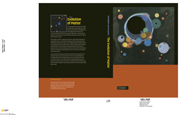Book contents
- Frontmatter
- Contents
- Introduction
- Part I The elements
- Part II Early solar system: nebula formation, evolution and lifetime
- 9 Introduction to the solar nebula
- 10 The primary solar system objects and related processes
- 11 Chondritic meteorites
- 12 Highly processed meteorites
- 13 A summary of early solar system chronology
- Part III Accretion of the Earth
- Part IV Global evolution of the Earth
- References
- Glossary
- Abbreviations
- Meteorites, rocks and minerals
- Index
11 - Chondritic meteorites
Published online by Cambridge University Press: 04 September 2009
- Frontmatter
- Contents
- Introduction
- Part I The elements
- Part II Early solar system: nebula formation, evolution and lifetime
- 9 Introduction to the solar nebula
- 10 The primary solar system objects and related processes
- 11 Chondritic meteorites
- 12 Highly processed meteorites
- 13 A summary of early solar system chronology
- Part III Accretion of the Earth
- Part IV Global evolution of the Earth
- References
- Glossary
- Abbreviations
- Meteorites, rocks and minerals
- Index
Summary
Introduction to chondritic meteorites: compositions and taxonomy
The most primitive meteorites are aggregates consisting of a fine-grained heterogeneous matrix, in which are embedded small (generally from 0.2 to 1.0 mm) droplet-like silicate particles termed chondrules, which have given the name to this meteorite class, chondrites. The chondrules and the matrix comprise distinct and different assemblies of chemical elements, e.g. volatile-depleted chondrules coexist with a volatile-enriched matrix. Some chondrites also contain metal grains. The third component of chondrites, Ca–Al-rich inclusions, was discussed in Chapter 10.
Chondrites preserve a unique record of processes and conditions in the early nebula. Although never molten after their agglomeration, chondrites have variably undergone metamorphism that has in some cases altered their mineralogy and composition. The relative abundances of involatile major and trace elements in bulk chondrites are generally similar to the solar abundances (see Section 3.4). However, in sharp contrast with the solar composition, only four elements, oxygen, silicon, magnesium and iron, are the major chondritic components, contributing almost 90% by mass, and these same four are also the major constituents of the terrestrial planets (Tables 11.1 and 17.1). There are clear reasons for the high contributions of these elements to the meteoritic and planetary compositions. First of all, the most abundant isotopes of O, Mg and Si are the so-called α- or primary isotopes (16O, 24Mg and 28Si), characterized by a high binding energy per nucleon (Chapter 1).
- Type
- Chapter
- Information
- The Evolution of MatterFrom the Big Bang to the Present Day, pp. 134 - 162Publisher: Cambridge University PressPrint publication year: 2008

